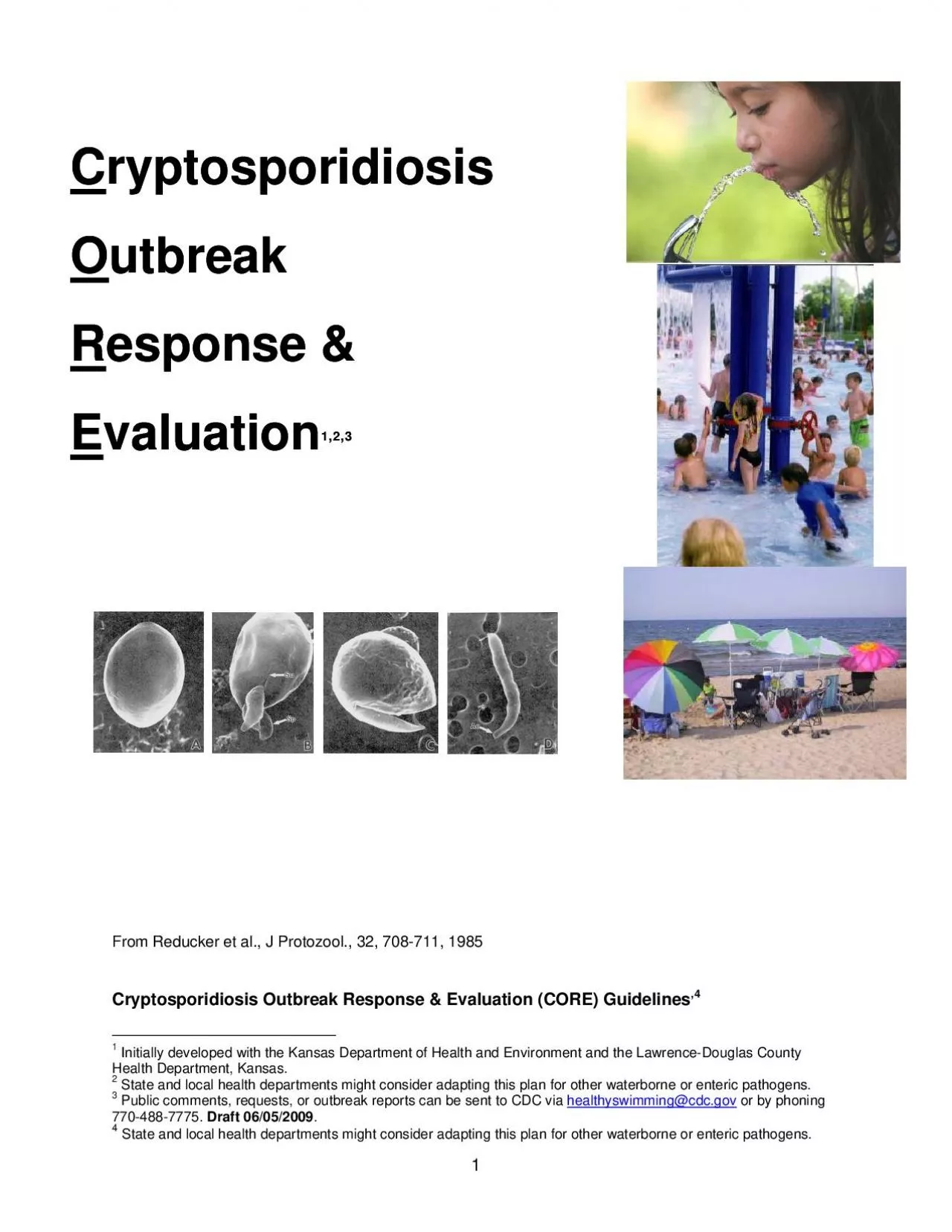PDF-From Reducker et al J Protozool 32 708711 1985Cryptosporidiosis
Author : jade | Published Date : 2022-08-25
123 123 Outbreak and case reporting data for cryptosporidiosis document increases in transmission of the parasite Cryptosporidium over the last 2 decades This is
Presentation Embed Code
Download Presentation
Download Presentation The PPT/PDF document "From Reducker et al J Protozool 32 70871..." is the property of its rightful owner. Permission is granted to download and print the materials on this website for personal, non-commercial use only, and to display it on your personal computer provided you do not modify the materials and that you retain all copyright notices contained in the materials. By downloading content from our website, you accept the terms of this agreement.
From Reducker et al J Protozool 32 708711 1985Cryptosporidiosis: Transcript
Download Rules Of Document
"From Reducker et al J Protozool 32 708711 1985Cryptosporidiosis"The content belongs to its owner. You may download and print it for personal use, without modification, and keep all copyright notices. By downloading, you agree to these terms.
Related Documents

